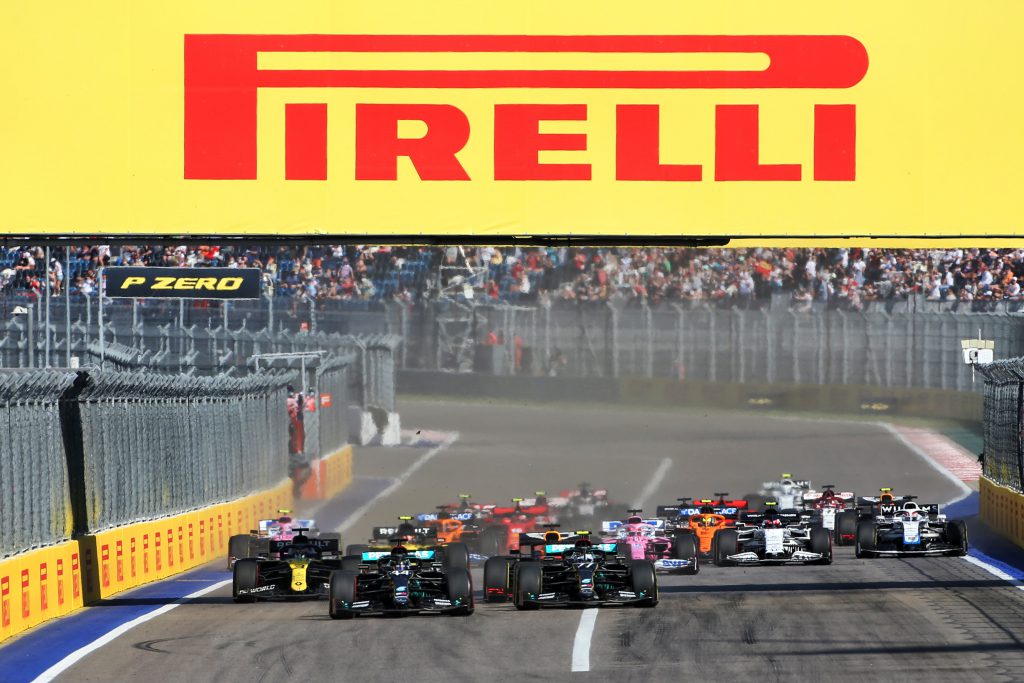Up Next

The way it played out, Valtteri Bottas didn’t need to beat Lewis Hamilton to win this race.
Hamilton did that for him, with a couple of small but crucial errors, each of which were jumped upon hard by the stewards. That Schumacher-equalling tally will just have to wait for another day.
Hamilton’s first error – that of running wide of the final corner track limits line on his first Q2 run, which triggered a sequence of events that had him starting on the wrong tyre – might just about have been recoverable, because he’s Lewis Hamilton and can often overcome such a disadvantage.
The second one – making two pre-race practice starts outside of the allocated area – was less of a clear-cut error, but much more punishing, given that he was given an in-race 10s penalty (as opposed to the penalty being added to the total race time afterwards), requiring it to be taken at his pitstop.
So Hamilton led away from pole, saw off Bottas’s challenge into Turn 2, ran until the soft tyre on which he’d been obliged to start wore out (lap 16 of 53), then sat in the pits for 10s doing nothing but fume before the switch to the hard tyres could even begin.
That wasn’t a recoverable penalty and ultimately was the crucible upon which he was welded to third, behind the inevitable Red Bull of Max Verstappen which was never really in the same race as Bottas, especially during the first stint when they were each on the medium tyre. Verstappen reported the RB16 to be much better once it was on the hard but by then he was too far back to threaten the leader.
That tyre pattern was significant. Against expectations, the hard was a better race tyre than the medium, possibly because race day was 6-deg C hotter even than Saturday, with a track temperature of 41-deg C.
It was a good enough tyre on the day that it might have allowed Hamilton to have won were it not for the penalty. It potentially made his starting on the soft not actually a disastrously bad strategy.
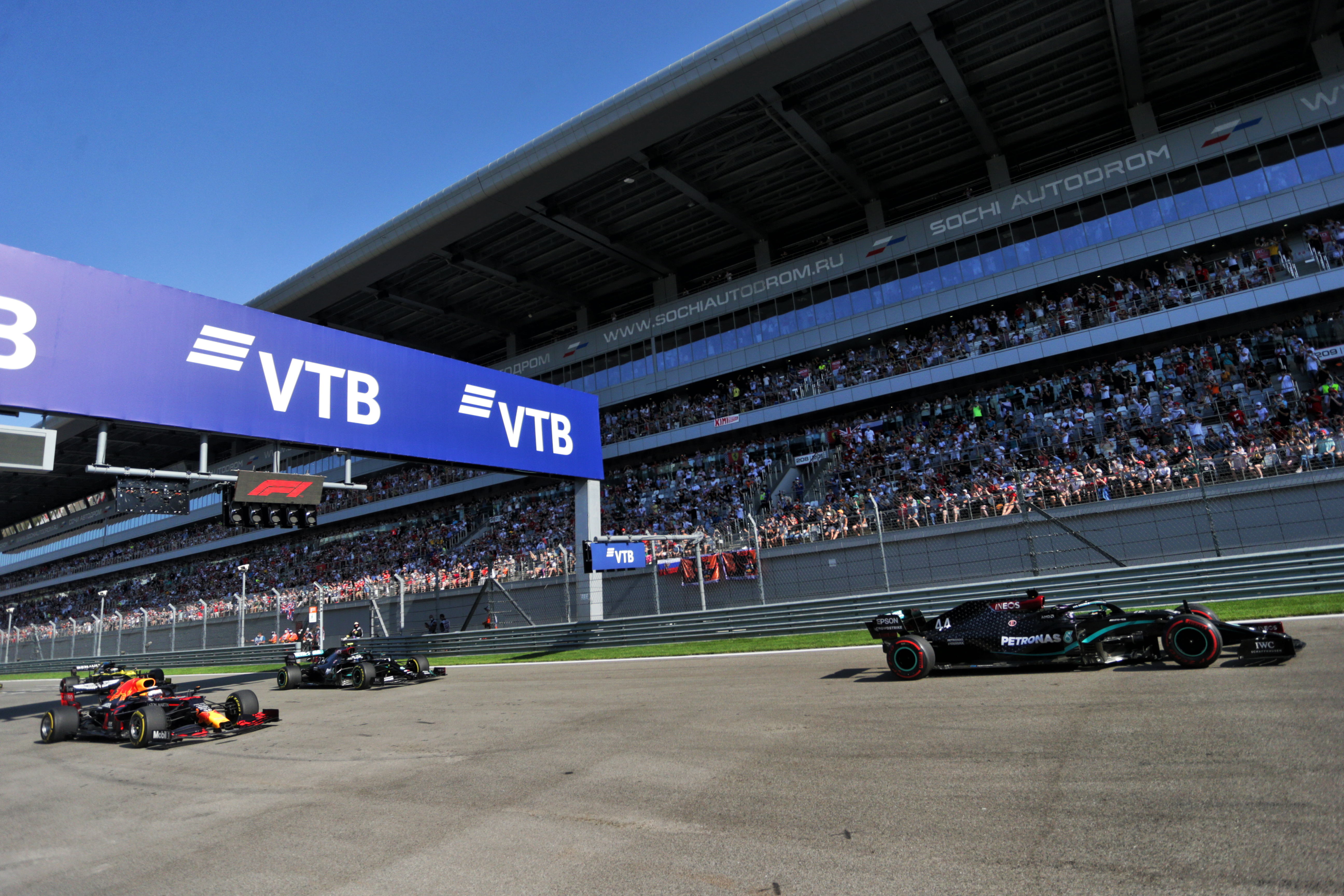
Pre-race, the assumption was that the short range of the C5 soft (softer than has ever been used at Sochi) would make the second stint of a one-stop race so long it would be very marginal even for the hard, which was expected anyway to be a slower tyre than the medium, even without the nursing that would be required of such a long stint.
But if you could start on the medium, like Bottas and Verstappen, you could run to maybe lap 30 on it and thus only be on the slower tyre for 23 laps rather than 38 or more.
But the hard wasn’t the slower tyre and it had plenty of range in it too – and so what might have happened were it not for Hamilton’s penalty was that he’d have gained on them after his stop and reduced the gap to Bottas to less than the 25s pitstop time loss and thereby have regained the lead as they pitted.
They’d then have been on hard tyres 15 laps newer than his and closing him down – but the pace penalty for an extra 15 laps of wear would only have been around 0.4s. That’s nowhere near enough to have passed on track.
The key to such a victory would have been Hamilton absolutely nailing the laps between his stop and that of Bottas to get that gap below 25s.
Bottas would in turn have been forced to push hard in that phase of the race to prevent Hamilton doing just that.
And the result would have turned upon whichever of them did the better job in that phase. Thanks to the hotter-than-forecast day, there would have been no better strategy, just two different well-matched strategies.
But that’s not the race we got, of course. Hamilton, even helped by the safety car running for the first five laps as the mess from the Carlos Sainz Jr first lap Turn 2 accident was cleared up (and the Racing Point of Lance Stroll – which crashed out after contact with Charles Leclerc’s Ferrari at Turn 4 – was moved), couldn’t pull out any great gap on Bottas, given that he was trying to make his softs last.
By the time Hamilton pitted and took his penalty as well as his new tyres, Bottas had 1.8s over Verstappen, which he extended to over 9s in the next 10 laps, as Verstappen simply had no answer to Bottas’ pace in that medium-shod opening stint.
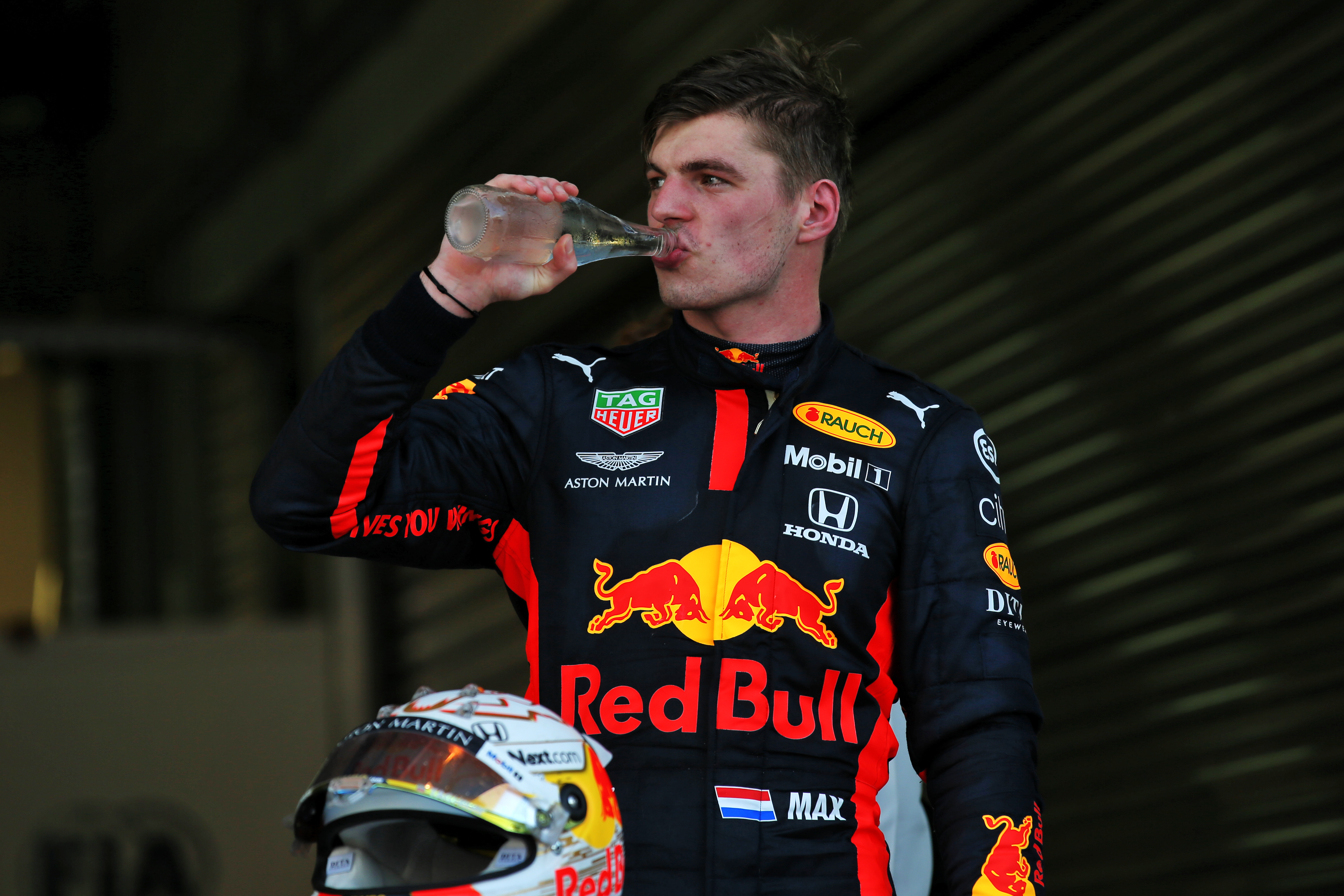
“I just couldn’t push on the corner entries,” related Max of the sensation he got as the overheated rear tyres gave inadequate support, a feeling that disappeared as soon as he got onto the hards. It was Red Bull that called it, bringing its man in for the usual stunningly quick pitstop at the end of lap 25.
Mercedes, to protect Bottas from being caught out by a safety car at this point, followed suit the next lap, which was half-distance. From there, just a comfortable run to the flag, Verstappen never getting any closer than 10s until Bottas wound it down in the last few laps – apart from when he let rip to secure the extra point for fastest lap, two from the end. He then gave a reprise of his Australia ’19 greeting to his critics.
Once Hamilton had been penalised there was nothing really to cloud Bottas’ day. Not even the huge insect that splattered all over his visor, just as he was trying to pick out his braking point on the run down to Turn 2 for the first time, having slipstreamed himself alongside Hamilton.
“That’s why I was a bit too deep into there,” he insisted afterwards of the moment that took him for bumpy ride over the kerb as Hamilton retained his lead.
“I knew that wasn’t game over,” said Bottas, “because I had the mediums so was obviously going to be going longer than Lewis.”
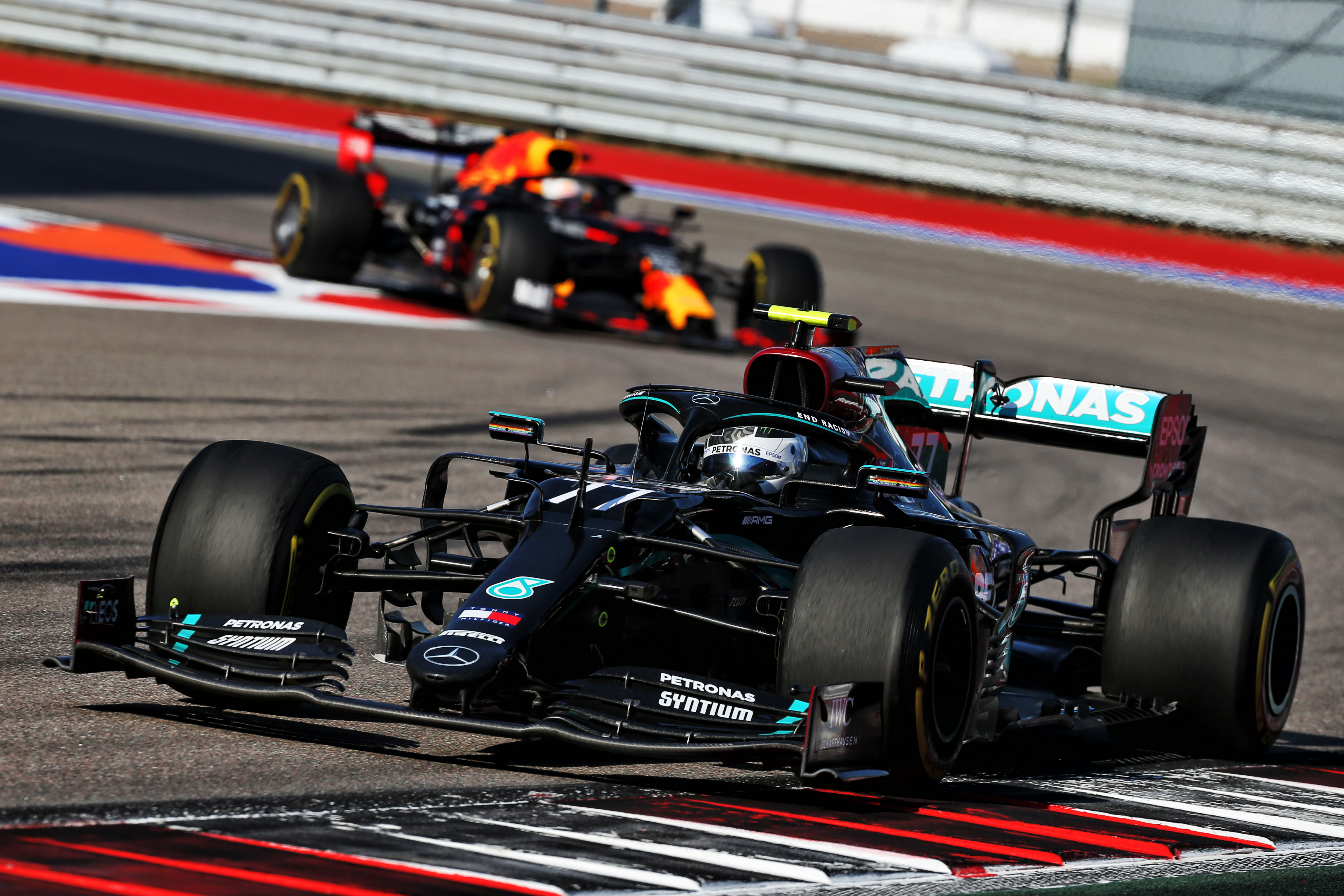
He just patiently let it come to him and as Hamilton peeled off ahead of him he got a great surprise at how much better the car felt in clean air than when in Hamilton’s turbulence. That’s very much a trait of the Mercedes; it’s not a car that’s been conceived to run anywhere other than the front.
Hamilton had originally been expecting to run until lap 16 and so had assumed the safety car laps had bought him an extension to that: “I was hoping to get another five laps.” But that wasn’t to be.
There were two reasons why. One was that his tyre grip was already going – something confirmed when those that came off were found to have almost nothing left on the left front and rear. Secondly, it was going to be quicker overall to get onto the new tyres, such was the drop-off of the soft.
He was going to drop into the traffic towards the tail end regardless of whether he came in on lap 16 or a couple of laps later and was comfortably going to be able to overtake them. So there was nothing to keep him out there.
But that’s not how it felt from inside Hamilton’s cockpit. The day before, they’d made him take the soft for the last-gasp Q2 lap rather than his pleading preference of his existing old mediums – and now here they were bringing him in early when he felt good in the car.
He wasn’t in the mood to hear the complex ramifications of the penalty upon his strategy, a penalty he felt was unjust and which had already worsened his mood.
As far as he was concerned, he now had to do too many laps for his second stint, and he would therefore nurse them to the end, ensuring he at least kept third. Which did not excite him at all, on a weekend when he might’ve expected to have equalled that momentous record.
It turned out later he nursed those hards way more than was needed. There was a lot of rubber still on them at the end – they were actually a great tyre on the day but he wasn’t in a place in his head to find that out.
This was the first time in years that’s he’s actually delivered a less than stellar performance on race day. Ever since running wide of that Turn 18 track limit line in Q2, there was something indefinable about the vibration of his weekend that was just a little bit off. It just illustrates the fine line of feasibility he habitually treads when he makes it look so easy.
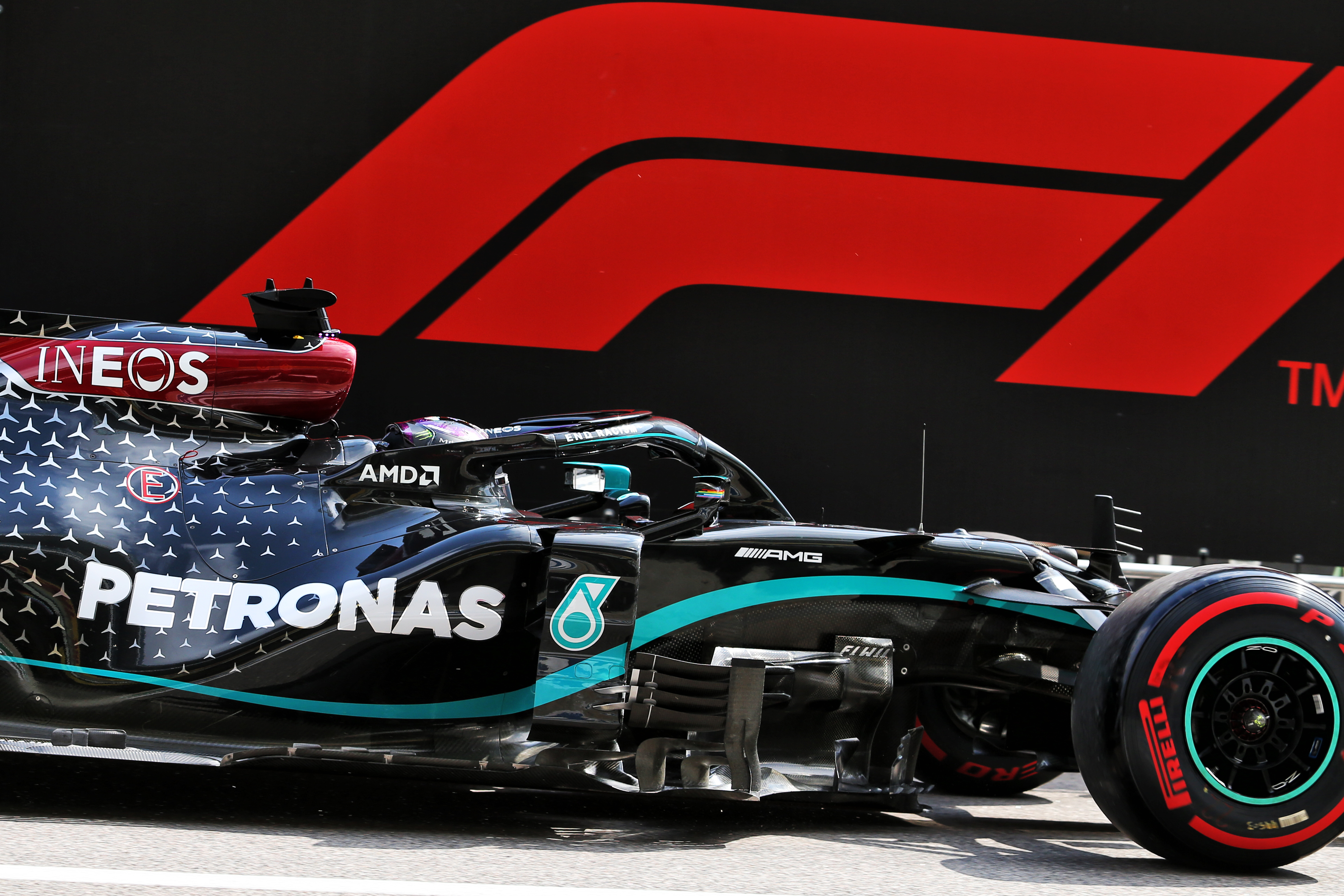
Mercedes had put him on the soft for the last gasp Q2 run because it figured he’d need the instant grip and a set of mediums that had already done a very hard lap (within a corner of completion before the red flags for Vettel’s accident) might take more than the one available lap to come up to temperature. Which meant sitting in the garage with the blankets on the stone cold softs rather than being in the pitlane queue ready to get straight out – and anyway that would have entailed sitting with the engine off and restarting it on the MGU-K. Which is not a facility the Mercedes has, unlike the Honda, Renault and Ferrari. Hence also why Stroll’s Mercedes-powered Racing Point had to be pulled out of the queue overheating.
Sergio Perez rescued the team’s day with a very fine fourth, achieved after jumping past the Renaults (which were delayed by coming out behind the slow, yet-to-stop, Ferrari of Sebastian Vettel) that had out-run him down to Turn 1 by pitting later. He then pulled out a comfortable margin over them.
Daniel Ricciardo’s class still showed through his scrappy first lap (in which he vaulted to third, but was passed on subsequent corners by Verstappen and Renault team-mate Esteban Ocon before the safety car came out). He had more pace than Ocon, who was ordered aside after failing to breach the defences of Leclerc’s Ferrari, which had got ahead courtesy of a much longer medium-tyred stint than either of the top 10-qualifying Renaults.
Ocon made way at the awkward approach to Turn 2, leading Ricciardo to lock up and run wide, for which he was given a 5s penalty. But after passing Leclerc he had the pace to more than pull that 5s out over the Ferrari to take fifth.

Leclerc’s sixth was a terrific over-delivery, Ocon’s seventh – under big pressure for the last few laps from Daniil Kvyat’s AlphaTauri – was a little disappointing.
Kvyat, helped by how good the hard was, used his qualifying outside the top 10 to beat team-mate Pierre Gasly (obliged to start on the soft) by superior strategy. Kvyat executed it perfectly, with a long and fast first stint. Gasly already had ninth under lock and key when AlphaTauri brought him in under a brief VSC (Romain Grosjean had destroyed the Turn 2 bollards), which set the scene for him to fight his way back up there, after a great close tussle with Alex Albon’s Red Bull and Lando Norris in an ancient-tyred McLaren damaged by running over the first lap debris of team-mate Sainz, who’d simply understeered hard into the Turn 2 run-off area wall.
Albon was at sea all weekend, qualifying 10th, 1.2s off Verstappen, made to look worse by a five-place gearbox penalty. Tenth place on a day when the un-contracted Perez starred won’t have made him feel comfortable.
Alfa’s Antonio Giovinazzi won ‘Class C’ after a long, hard fight with Kevin Magnussen’s Haas and a successful multi-lap defence from Vettel’s Ferrari, which couldn’t escape from the place Seb’s accident had left it on the grid.
Kimi Raikkonen completed his record-equalling 322nd grand prix in 14th ahead of Norris (forced into a hopelessly late second stop with no tread left on his 47-lap old tyres), Nicholas Latifi’s Williams, Grosjean’s bollard-destroying Haas and George Russell who, having compromised his strategy with an early lock-up on his hards, pitted the Williams late for a set of softs and an optimistic crack at fastest lap. He fell short only by 0.3s.
Bottas’ victory was made easier by Hamilton’s errors. But Bottas didn’t make the errors.
“Things definitely did go my way today,” he said. “I have been saying that things can’t go against you forever. So, definitely really satisfying today to get the win. It felt like it was well-earned.
“Obviously, I consider myself lucky as well with Lewis’ penalty. But otherwise it was a strong race and really I feel that it can give me a confidence boost and good momentum for the next races.”


